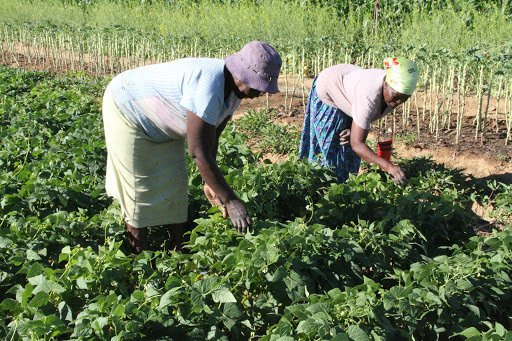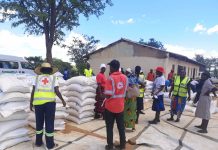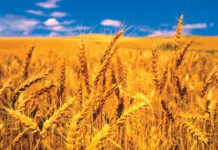Staff Writer
United Nations agency, the Food and Agriculture Organisation is seeking at least US$20 million to assist 630 000 Zimbabwe overcome expected food insecurity in 2021.
According to FAO’s latest Humanitarian Support Plan for 2021, at least 3.38 million people are projected to be in high acute food insecurity this year while 74 300 children are malnourished, including 38 400 of these being acutely malnourished.
This is due, the agency said, to high prices and poor market supply.
“A wet environment may also create favourable breeding conditions for the African migratory locust, which has been plaguing Southern Africa since May 2020, further threatening crop production and agriculture-based livelihoods.
“Livestock production is also under threat of declining as pastoralists face the effects of two years of low rainfall and overgrazing. In addition to a rise in mortalities, from five to nine percent, livestock body conditions remain less than adequate and are likely to deteriorate due to a high risk of disease and limited access to veterinary drugs.
“Increased surveillance of livestock disease and rapid response is also critical to maintaining the strength of the livestock sector.”
FAO said containment measures, particularly movement restrictions, implemented to reduce the spread of COVID-19 have disrupted supply chains limiting the availability of some basic food items.
“Further, many rural households have lost access to remittances, a key source of income, and more than 50 percent of their earnings as they can longer engage in key income-generating activities including casual labour and livestock trading.
“Consequently, households have been forced to adopt negative coping mechanisms, such as selling livelihoods assets. There is a crucial need for scaled-up humanitarian assistance to help households meet their basic needs, enhance their coping capacities and improve their productivity.
“By protecting their livelihoods, millions of vulnerable Zimbabweans can be prevented from falling into even worse phases of food insecurity.”
The challenging macroeconomic conditions, including soaring inflation, COVID-19-related income losses, and back-to-back poor agricultural seasons have eroded the livelihoods of millions across Zimbabwe and led to rising food insecurity.
“Drought is a key threat to the agriculture sector in particular, which is composed of mostly rain-fed farming systems, having caused water shortages, low production and food insecurity in recent years. العاب النت 2023
“Despite projections of a good 2020/2021 rainy season and improved crop production, yields are unlikely to rise above the five-year average as farmers face challenges in accessing agricultural inputs including quality seeds and fertilizer.”
With 60-70 percent of Zimbabwe’s population engaged in agriculture sector, FAO seeks to restore crop production the provision of bio-fortified seed varieties while promoting agroecology and improved pasture and rangeland management.
This would be achieved through the use of organic fertilizer, agroecology demonstration plots, ‘look and learn’ training activities for livestock farmers and improved pasture/forage seeds.
It also seeks to contribute to gender mainstreaming, learning and improved nutrition training of peer facilitators through training in bio-fortified food, preparation and consumption and raining in healthy diets.
The initiatives would include the increase in livestock disease surveillance and rapid response by raising awareness, early warning alert dissemination, strengthening national and subnational disease diagnostic facilities, water point rehabilitation and repairs and strengthening delivery of veterinary products.
FAO said the humanitarian situation in Zimbabwe remains fragile and requires close, and continued attention. فيلم +50
“Widespread food insecurity is largely a result of shocks and stressors including recurrent drought, the effects of the coronavirus disease 2019 (COVID-19) pandemic, pests and diseases and rising food prices,” the agency said.
“Season-sensitive, agriculture-based support is vital to enabling vulnerable households to rebuild their livelihoods and strengthen their resilience. بايير مصر
“With 35 percent of the rural population expected to be acutely food insecure during the peak hunger period in 2021, scaled-up humanitarian assistance is needed urgently,” FAO stated.
FAO is working with partners in the Food Security and Nutrition Clusters to improve food access to enable vulnerable people to meet basic food requirements in order to save lives while protecting the lives of acutely food-insecure populations by providing food assistance and emergency agricultural support.













